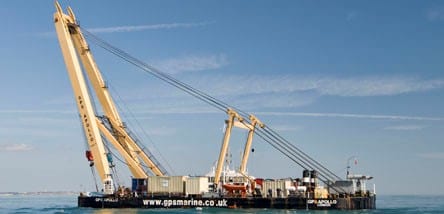BARROWFORD, England — A team of restoration experts is currently at work salvaging a unique World War II aircraft from the floor of the English Channel. Using cutting edge restoration techniques within a purpose-built polytunnel from First Tunnels, the team hopes to have the rare Dornier 17 ready for exhibition within two years.
British television viewers may have enjoyed a BBC News 24 documentary aired last weekend telling the incredible story of the Dornier 17 aircraft, which is available on BBC iPlayer until May 27. The RAF Museum in Hendon is behind the project to raise the aircraft and end its watery exile.
The project is made even more exciting by the fact that this particular aircraft is the last of its kind, rendering it a valuable addition to the museum’s collection and a thrilling historical exhibit for future display, according to museum officials.
 The Dornier 17 was central to the German war effort in its role as a Luftwaffe bomber used against the allies in the Battle of Britain. Now, the only surviving example of this iconic aircraft is being salvaged from beneath 50 feet of water at Goodwin Sands off the coast of Kent.
The Dornier 17 was central to the German war effort in its role as a Luftwaffe bomber used against the allies in the Battle of Britain. Now, the only surviving example of this iconic aircraft is being salvaged from beneath 50 feet of water at Goodwin Sands off the coast of Kent.
Raising the aircraft is only the start of the long road to restoration. A team of specialists has devised a conservation program for the Dornier 17 that involves the use of chemicals engineered to stop corrosion in its tracks.
This report on the BBC News website reveals how a group of experts at Imperial College London came up with the technique that will stabilize the metal components of the Dornier 17 after 70 years beneath the waves.
An assortment of specialists have already been involved in the recovery operation to date, including the team at First Tunnels, who have constructed two large polytunnels at the museum’s conservation centre in Cosford, Shropshire, where the chemical treatment will take place.
The process of spraying the aircraft with chemicals in a purpose-built polytunnel environment has enabled conservationists to cut the cost of the operation by giving them an economical alternative to the traditional method of immersing the parts in large and expensive containers.
The initial stage of the restoration, which involves ending the negative effects of corrosion, will take around 18 months to complete.

lifting frame — use self locking Louis pins in place of nut and bolt — save a loy of underwater time
There are also reports of a treasure trove of wrecked German aircraft from WWII underneath a landfill in Bavaria. It originated as the corner of a Luftwaffe base where non-airworthy aircraft were cannibalized. When the US. Army took over the field, they eventually bulldozed the aircraft into a pit that became their landfill, which was then later used by the community. It is known that the aircraft are down there, but the German environmental authorities view this now as a hazmat matter and do not want anything dug up. I have seen photos from the end of the war and this must be an amazing collection of aircraft, even if they are crushed.